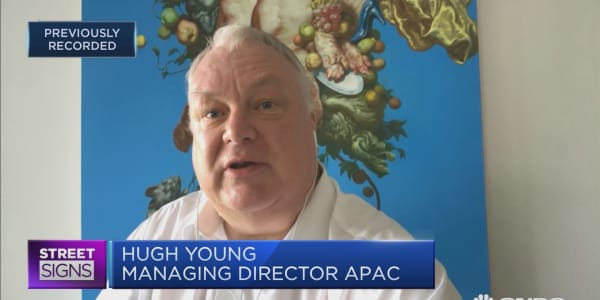Even by summer's traditionally low stock volume standards, this year has been very light, culminating in a "dismal" August which has left volumes down year-over-year, according to traders.
While the general absence of rollercoaster style moves in stock indexes and hairpin changes in price may cause many investors and companies to breathe a sigh of relief, it does drastically reduce the opportunity for investors to make money from speculating on movements in the market.
Read MoreWhat's the story with trading volume? Inquiring minds want toknow
One area of concern is the stubbornly low levels of the so-called "fear index" -- the CBOE's Volatility Index or VIX -- which measures traders' expectations for future market volatility.
As U.S. stock indexes continued to hit new all-time highs in 2014, traders have wondered why the VIX, considered by many to be the world's best barometer of investor sentiment and market volatility, is down around 6 percent.
Optimists would say the VIX is rightly at a multi-year low given that the is repeatedly hitting fresh all-time highs. Pessimists contend that a low VIX shows investors have let their guard down, dropping demand for S&P 500 stock-portfolio insurance just when they may need it.
Meanwhile, monthly equity and index options, derivatives that allow investors to buy or sell an index like the S&P 500 at an agreed price before a certain date, and act as insurance, hit levels in August this year not seen since 2011.
Read MoreWhy stocks could get slammed soon
"The VIX is often called the 'fear index', and while investors don't seem to be worried right now, our survey respondents say a little fear may be in order," said brokerage firm ConvergEx Group in a recent survey of investor sentiment.
"We also have a clear picture of how record-low volatility has hurt the sell-side: two-thirds of banks and brokers say the current environment has been bad or very bad for business," the company added.
Who's to blame?
Some investors are blaming quantitative easing and the threat of an interest rate hike from the Federal Reserve for the markets taking a wait-and-see approach and reining in their volumes and volatility.
Meanwhile, the debate around high frequency trading (HFT) that was sparked by the release of Michael Lewis's book "Flash Boys" has also been named as a culprit, as some analysts say it dented investor confidence and trust in the market.
Read MoreThis is the biggest worry hanging over stocks
However, other experts are looking to global issues for the fall-off in volumes and volatility, with the crises in Ukraine, Syria, Israel and Iraq a consistent theme throughout the year.
"I'm not sure I agree with that (HFT is to blame) and I don't necessarily believe that investors have turned their back on the market. It is true that the "straight-up" nature of the bull market makes it less of a traders market and more of a buy and hold one," said chief market analyst at Interactive Brokers, Andrew Wilkinson.
"In February 2014, index options comprised a record 12.4 percent of total volume and in August's proportion of 11.6 percent is the highest since," he said.
Read More
Wilkinson put these massive volumes in index options down to a "clear desire among portfolio managers to reach for protection during the lift-off for geopolitical worries."
Is it here to stay?
So is this low-volatility, low-volume environment set to persist, and will traders need to re-think how they look at market movements and volume?
Last week, the Chicago Board Options Exchange said it plans to now include from the start of October weekly S&P 500 options in its calculation of the VIX, given the surge in shorter term contracts, which traders are using to hedge stock holdings.
This shift from using just monthly options to measure expectations in price swings should help with accuracy, analysts have said, but it won't be enough on its own to get volumes and volatility moving.
Read MoreVIX 20 percent jump could be message for stocks
Some 71 percent of investors polled by ConvergEx Group expect to see volatility to start climbing by the end of this month and 81 percent expect a rise by the end of December, but two-thirds say that market participants are far too complacent.
"The VIX has been trending lower since the announcement of QE a number of years ago. Low interest rates and the Fed put have both led to rising and very correlated markets," head trader from the group, Peter Coleman said.
"What could get volumes and volatility up? Rising interest rates combined with the wind down of QE. But if these things happen and volume and volatility don't pick up, traders should be concerned," he added.
—By CNBC's Jenny Cosgrave: Follow her on Twitter @jenny_cosgrave





